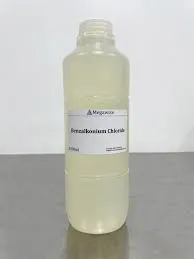isothiazolinone in detergent
Isothiazolinones in Detergents Understanding Their Role and Implications
Isothiazolinones are a class of chemical compounds that have gained significant attention in the formulation of various products, including detergents and other cleaning agents. These compounds, particularly methylisothiazolinone (MIT) and chloromethylisothiazolinone (CMIT), are widely recognized for their effectiveness as preservatives and biocides. They help prevent the growth of bacteria and fungi in products that contain water, ensuring that these items remain effective and safe for consumer use.
Isothiazolinones in Detergents Understanding Their Role and Implications
One of the main issues surrounding isothiazolinones is their potential allergenic properties. Studies have shown that they can cause skin sensitization and allergic reactions in some individuals. The rise in reported cases of contact dermatitis linked to isothiazolinones has prompted regulatory agencies in various countries to scrutinize their use more closely. In the European Union, for instance, regulations have been tightened concerning the allowable concentrations of these compounds in consumer products, especially those intended for personal care or direct skin contact.
isothiazolinone in detergent

Furthermore, the environmental impact of isothiazolinones has raised concerns among ecologists and health advocates. When discharged into waterways, these compounds can be toxic to aquatic life. They disrupt ecosystems and contribute to biodiversity loss, prompting calls for the development of safer, more sustainable alternatives in detergent formulation. Manufacturers are beginning to explore natural preservatives and biocides that can effectively replace synthetic compounds without compromising product performance.
Consumer awareness is also crucial in this discussion. As more individuals seek to understand the ingredients in their cleaning products, the demand for transparency and safer formulations grows. Many consumers now prefer brands that use environmentally friendly practices and ingredients, leading companies to rethink their product compositions. Labels that clearly identify the presence of isothiazolinones and potential allergens are becoming more common, empowering consumers to make informed choices.
In conclusion, while isothiazolinones play a pivotal role in enhancing the efficacy and longevity of detergents and other cleaning products, the ongoing debate surrounding their safety and environmental impact cannot be ignored. As regulations evolve and consumer preferences shift towards safer alternatives, the industry must adapt to these changes. Future developments may see a decline in the use of isothiazolinones, replaced by more sustainable ingredients that fulfill both consumer needs and ecological responsibilities. The journey towards cleaner, safer, and more effective cleaning solutions is ongoing, and it presents both challenges and opportunities for innovation in the detergent industry.
-
Water Treatment with Flocculant Water TreatmentNewsJun.12,2025
-
Polymaleic AnhydrideNewsJun.12,2025
-
Polyaspartic AcidNewsJun.12,2025
-
Enhance Industrial Processes with IsothiazolinonesNewsJun.12,2025
-
Enhance Industrial Processes with PBTCA SolutionsNewsJun.12,2025
-
Dodecyldimethylbenzylammonium Chloride SolutionsNewsJun.12,2025





